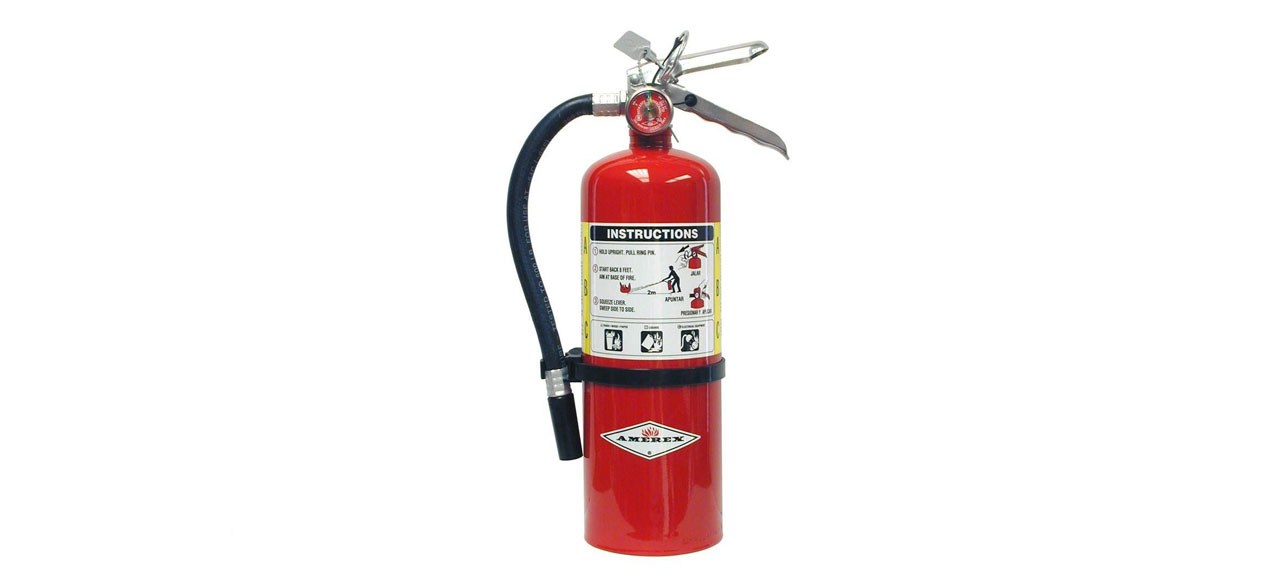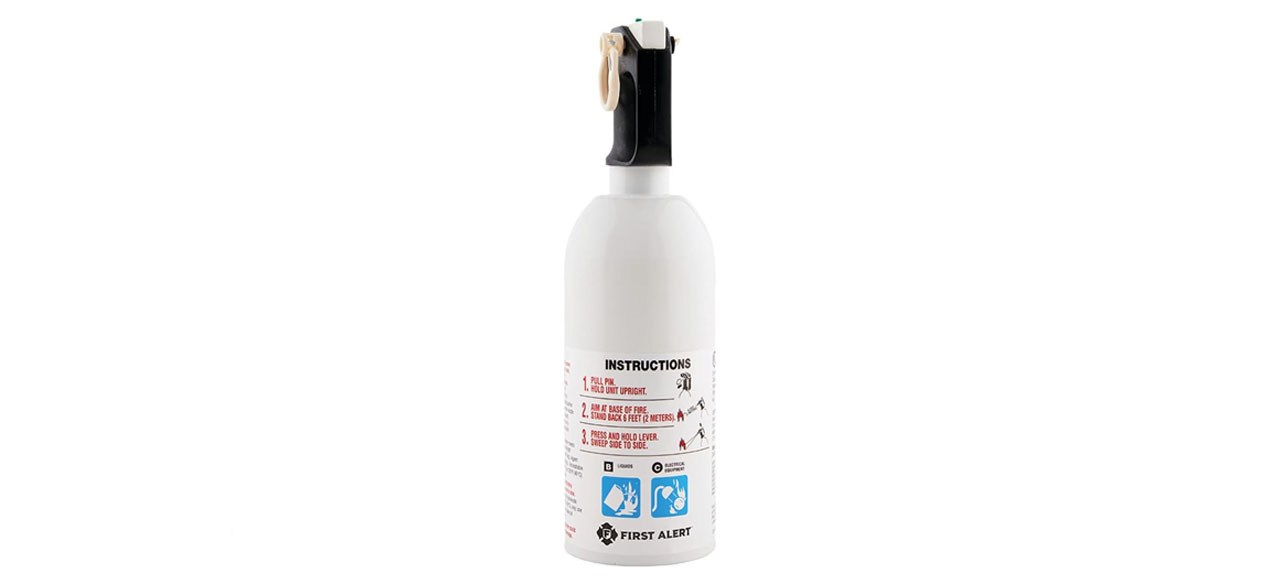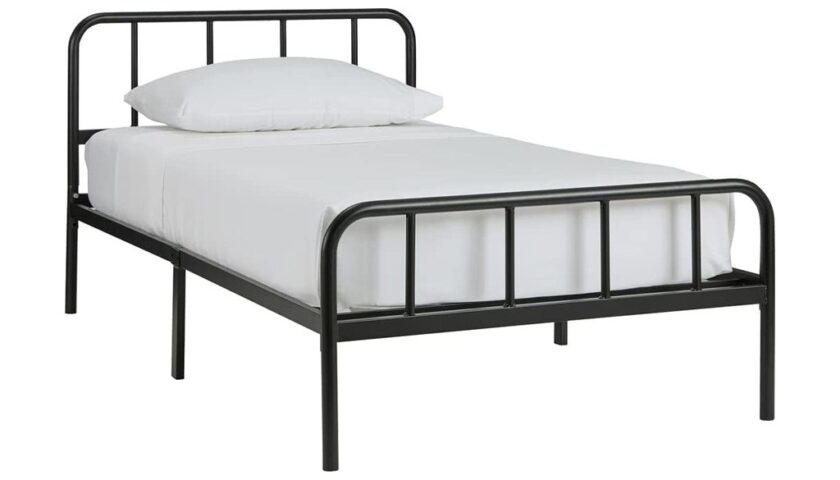Which fire extinguishers are best?
The risk of fires breaking out is always present. Basic household safety recommends that all homes contain at least one fire extinguisher. Many safety experts recommend having one in most rooms of homes, especially if the home is large. Fire extinguishers come in more forms than one, which can make it hard to know which one is right.
One of the best fire extinguishers is the Amerex B402 5 Pound ABC Dry Chemical Class A B C Fire Extinguisher. It is rated to handle almost any source of fire.
What to know before you buy a fire extinguisher
Fire extinguisher classes
Fire extinguishers are separated into five classes with each class covering certain types and sources of fires. Never use a fire extinguisher against a fire it isn’t rated for, as you could accelerate the fire instead.
- Class A: Class A covers fires sourced from solids like wood. Its image is that of a burning trash can and/or campfire.
- Class B: Class B covers fires from liquids and gas like oil and propane. Its image is that of a burning gas canister.
- Class C: Class C covers fires caused by electricity, such as shorted wire. Its image is that of a burning plug.
- Class D: Class D covers fires sourced from metals like aluminum. Its image is that of a burning gear. These fires are unlikely in residences.
- Class K: Class K covers fires sourced from cooking oil. Its image is that of a burning pan. These extinguishers are usually found in commercial kitchens as residences can use a class B extinguisher for their cooking fires.
What to look for in a quality fire extinguisher
Extinguishing materials
Each class of fire extinguisher uses different extinguishing materials, which target the kinds of fires those classes are rated to fight.
- Carbon dioxide: Carbon dioxide is designed to remove heat and oxygen from fires. It’s typically used in class B and C models.
- Dry chemical: Dry chemicals are the most common residential-intended material found in fire extinguishers. They’re found in classes A through C.
- Wet chemical: Wet chemicals are typically found in class K fire extinguishers, but they are also found in class A models in rare cases.
- Dry powder: Dry powder is largely restricted to industrial fires covered in class D extinguishers.
- Liquefied gas: Liquified gas is less commonly found in fire extinguishers. It is typically used in classes B and C and rarely in class A models.
- Foam: Foam is as equally common as dry chemicals, especially for use in residencies. Foam is found in classes A through C.
- Water: Water is rarely used outside of fire departments’ high-pressure dispensers. In rare cases, it can be found mixed with foam in class A fire extinguishers.
How much you can expect to spend on a fire extinguisher
Fire extinguisher prices typically coincide with the amount of extinguishing product they contain. Miniature fire extinguishers can cost as little as $20, while the largest capacities can reach $100. The average cost of a fire extinguisher is $45.
Fire extinguisher FAQ
How do I maintain my fire extinguisher?
A. Fire extinguishers should be examined for signs of defects at least once a year. Each fire extinguisher has its own set of maintenance needs that should be listed on the canister. Common areas of concern for fire extinguishers are the valve, nozzle and safety pins that prevent accidental discharge. All extinguishers should have their pressure examined, as the pressure can leak out over time, with some needing to be shaken every three months to maintain their pressure. You can also contact your local fire department to see if they can inspect your fire extinguisher.
What size fire extinguisher should I buy?
A. The appropriate size fire extinguisher depends on what room of the home or other areas it’s supposed to be able to cover. Large fire extinguishers are designed to put out larger fires that may have been burning for a few minutes, like in a garage. Medium canisters should be enough to handle fires found quickly in commonly accessed areas, while small canisters are typically meant to cover cooking- or car-related fires.
What’s the best fire extinguisher to buy?
Top fire extinguisher
Amerex B402 5 Pound ABC Dry Chemical Class A B C Fire Extinguisher
What you need to know: This top-choice fire extinguisher is highly versatile in what it can cover and easy to use.
What you’ll love: This fire extinguisher’s extinguishing agent can be refilled once it’s expired or used so you don’t need to purchase a new tank. It covers fires sourced from electricity, liquids and dry elements. It includes a small loop that can be placed on a hook for quick access.
What you should consider: Some models arrived with broken safety seals or with empty tanks. Some consumers also reported pins falling out on their own, causing discharge.
Top fire extinguisher for the money
First Alert Home Fire Extinguisher Rated 1-A:10-B:C
What you need to know: This budget fire extinguisher is a great choice for those looking to save some money without sacrificing reliability.
What you’ll love: This fire extinguisher can be refilled once it has expired or been used. It is approved by the U.S. Marines and includes a mounting bracket for quick and easy wall access. The product has a limited 10-year warranty.
What you should consider: This fire extinguisher is small enough to handle only newly started fires. The capacity dial can be inaccurate.
Worth checking out
First Alert Kitchen Fire Extinguisher
What you need to know: This miniature fire extinguisher is designed and marketed for use in the kitchen but can be used anywhere with the potential for small fires.
What you’ll love: This fire extinguisher is rated to handle flammable liquids and electrical fires. Its pressure can be checked with an easy-to-read push-button sensor on the top. It includes a wall mounting bracket for quick and easy access.
What you should consider: The wall mounting bracket can be difficult to install. This fire extinguisher has a small capacity and cannot be refilled.
Prices listed reflect time and date of publication and are subject to change.
Check out our Daily Deals for the best products at the best prices and sign up here to receive the BestReviews weekly newsletter full of shopping inspo and sales.
BestReviews spends thousands of hours researching, analyzing and testing products to recommend the best picks for most consumers. BestReviews and its newspaper partners may earn a commission if you purchase a product through one of our links.
Distributed by Tribune Content Agency, LLC.







